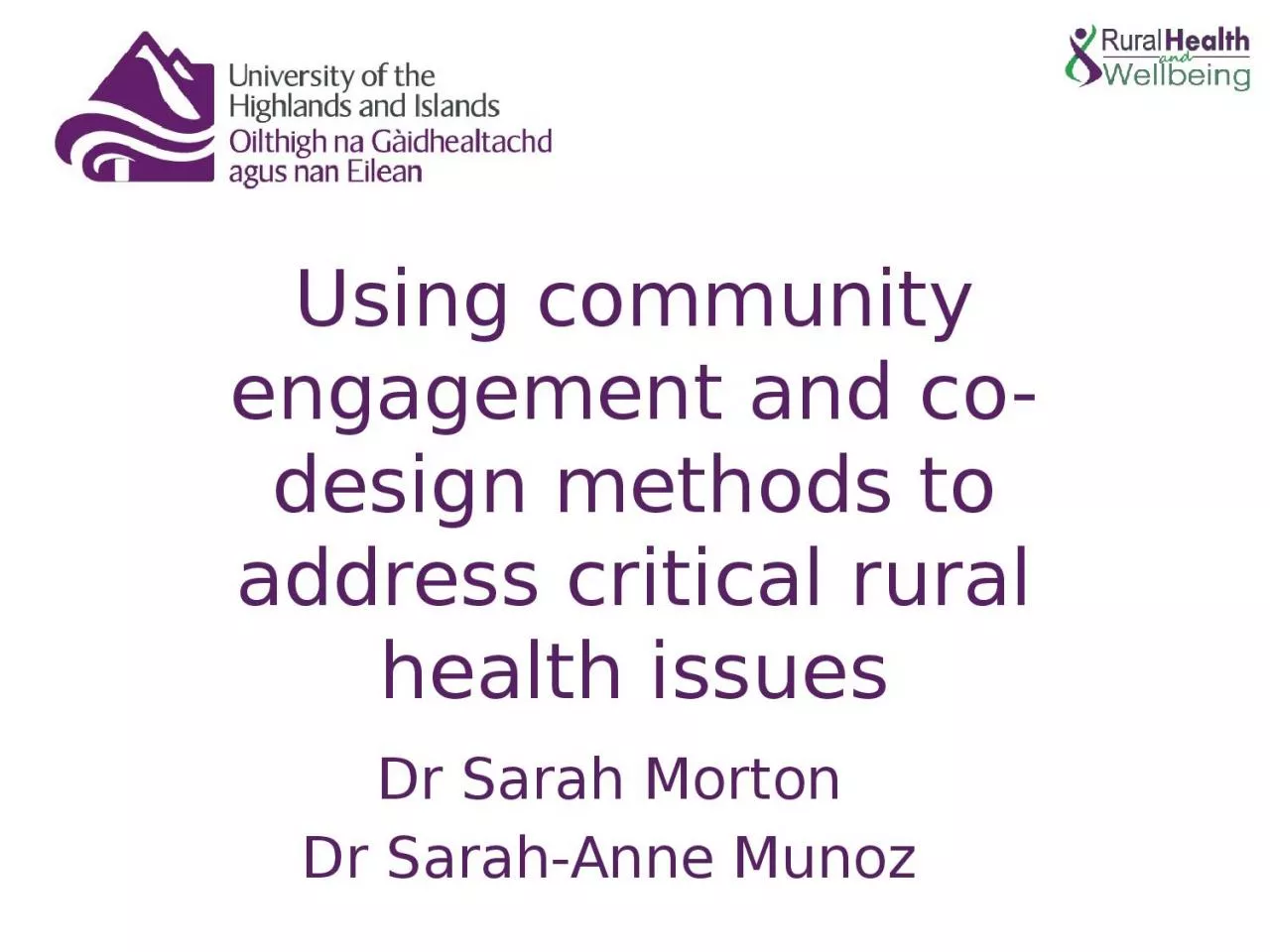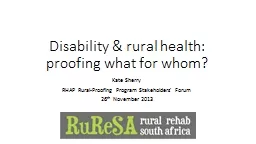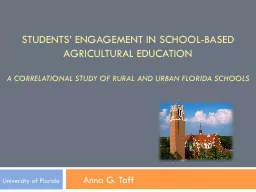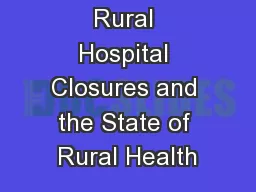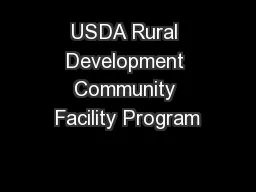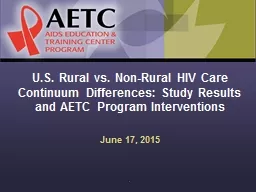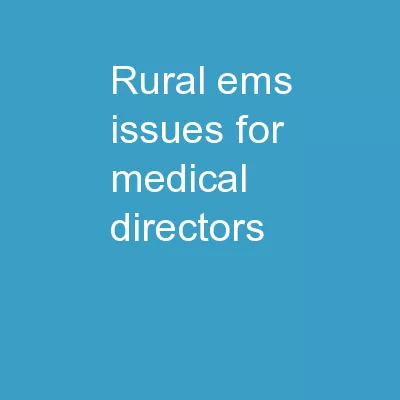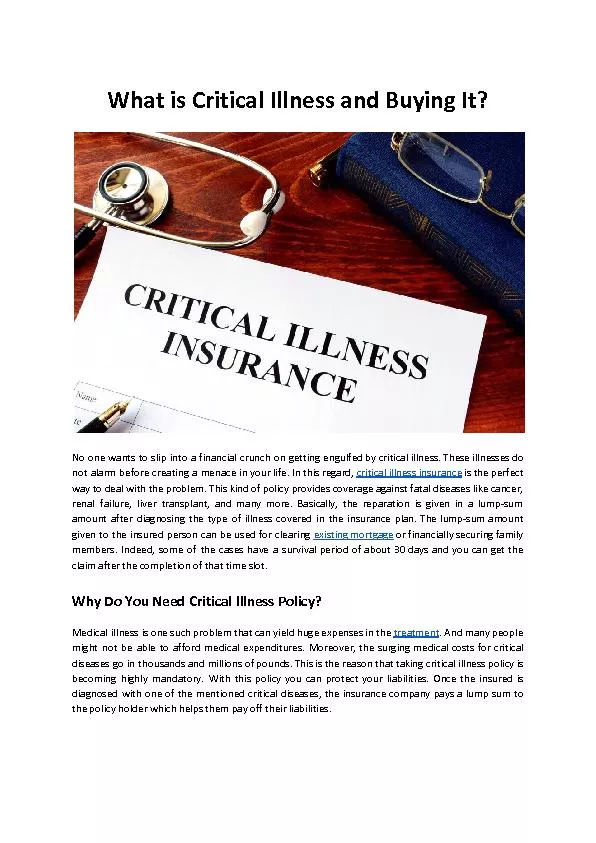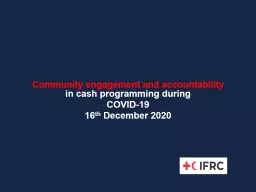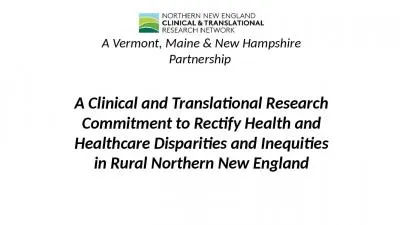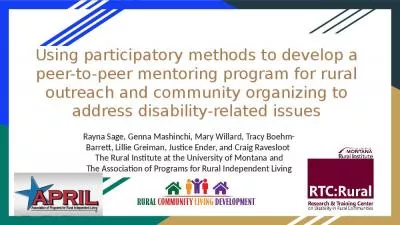PPT-Using community engagement and co-design methods to address critical rural health issues
Author : lydia | Published Date : 2022-06-20
Dr Sarah Morton Dr SarahAnne Munoz Background Rural communities can be complex and challenging to engage with and to sustain engagement with Health and wellbeing
Presentation Embed Code
Download Presentation
Download Presentation The PPT/PDF document "Using community engagement and co-desig..." is the property of its rightful owner. Permission is granted to download and print the materials on this website for personal, non-commercial use only, and to display it on your personal computer provided you do not modify the materials and that you retain all copyright notices contained in the materials. By downloading content from our website, you accept the terms of this agreement.
Using community engagement and co-design methods to address critical rural health issues: Transcript
Download Rules Of Document
"Using community engagement and co-design methods to address critical rural health issues"The content belongs to its owner. You may download and print it for personal use, without modification, and keep all copyright notices. By downloading, you agree to these terms.
Related Documents

